Magdalena Mock Orange Philadelphus subcanus var. magdalenae
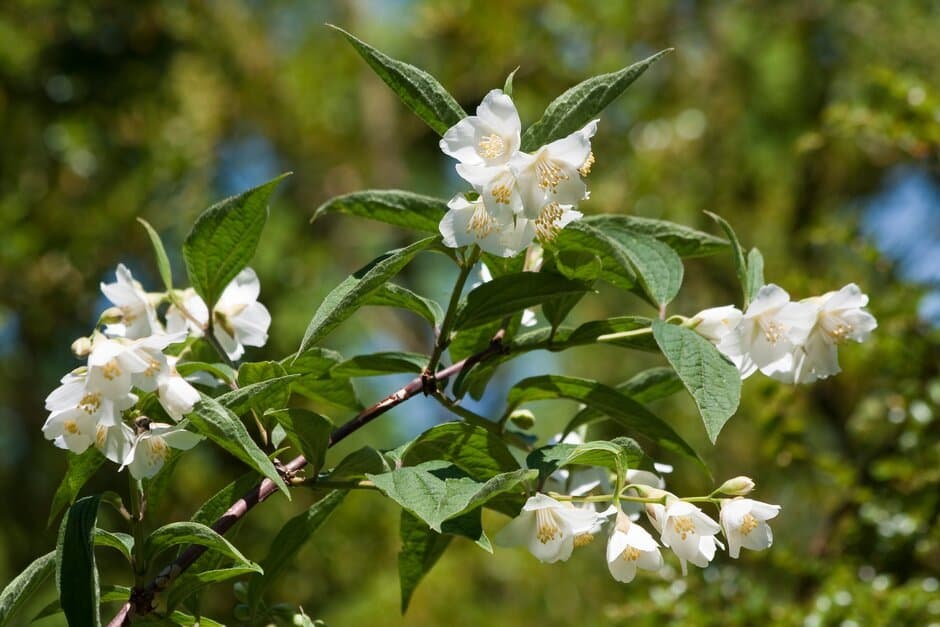
ABOUT
Commonly known as Mock Orange, this variety has an elegant and romantic appearance often characterized by its multiple stems that form an arching and somewhat fountain-like structure. The branches are graced with lush green leaves that are oval to oblong in shape and come to a point at the tip, offering a dense backdrop of foliage through which light can play beautifully. The highlight of this plant, however, is the abundance of white, fragrant flowers that burst forth in late spring to early summer. Each bloom is typically composed of four petals that create a loose, open cup shape, reminiscent in form and fragrance to that of an orange blossom, from which the plant inherits its common name. The inflorescences are clusters that generously adorn the bush, creating a spectacular display. The plant is a captivating addition to any garden, imparting both visual charm and a delightful scent.
About this plant
 Names
NamesFamily
Hydrangeaceae
Synonyms
Magdalena Mock Orange
Common names
Philadelphus subcanus var. magdalenae.
 Toxicity
ToxicityTo humans
The plant commonly known as Mock Orange is generally considered non-toxic to humans. Philadelphus species, including Philadelphus subcanus var. magdalenae, are not commonly associated with any significant poisonous qualities that would be harmful if touched or accidentally ingested. Therefore, there typically are no symptoms of poisoning related to this plant, and ingesting parts of this plant is not expected to have serious consequences for human health.
To pets
Similar to its effects on humans, the plant commonly known as Mock Orange is also generally considered non-toxic to pets. Philadelphus species, including Philadelphus subcanus var. magdalenae, are not known to cause poisoning in pets. Consequently, ingesting parts of this plant should not result in any toxic symptoms or significant health consequences for pets.
 Characteristics
CharacteristicsLife cycle
Perennials
Foliage type
Deciduous
Color of leaves
Green
Flower color
White
Height
5-10 feet (1.5-3 meters)
Spread
5-10 feet (1.5-3 meters)
Plant type
Shrub
Hardiness zones
5
Native area
North America
Benefits
 General Benefits
General Benefits- Ornamental appeal: Philadelphus subcanus var. magdalenae, commonly known as "Mock Orange," is prized for its decorative white flowers and pleasant fragrance, which adds aesthetic value to gardens and landscapes.
- Scented flowers: The plant's blooms emit a sweet, citrus-like fragrance, enhancing the sensory experience in the area where it is planted.
- Wildlife attraction: The flowers of Mock Orange attract pollinators such as bees and butterflies, supporting local biodiversity.
- Low maintenance: Once established, Mock Orange is known for being a low-maintenance plant, requiring minimal care beyond basic watering and occasional pruning.
- Drought tolerance: The plant exhibits a degree of drought resistance, making it suitable for xeriscaping and gardens in drier climates.
- Privacy screening: With its dense growth habit, Mock Orange can be used as a natural screen or hedge, providing privacy and reducing noise pollution.
- Suitable for mixed borders: The shrub can be integrated into mixed plant borders alongside other plants to create a diverse and attractive garden design.
 Medical Properties
Medical PropertiesThis plant is not used for medical purposes.
 Air-purifying Qualities
Air-purifying QualitiesThis plant is not specifically known for air purifying qualities.
 Other Uses
Other Uses- Mock Orange branches can be used in floral arrangements for their attractive foliage and structure, adding height and a natural look to the composition.
- The wood of Mock Orange is hard and fine-grained, making it suitable for crafting small wooden items such as handles, pegs, or even intricate carvings.
- Because of their dense growth, Mock Orange shrubs can be planted as a privacy screen or hedge in gardens and parks.
- The fragrant flowers of Mock Orange can be used in potpourris or scented sachets to freshen up drawers and closets naturally.
- Mock Orange can be used as a background plant in mixed borders to complement flowering perennials and annuals, providing a lush, green backdrop.
- The shrub can be used for training into a small, informal tree for garden landscapes that require vertical interest without the size of a full tree.
- Dried branches of Mock Orange can be used as kindling for fires due to their readiness to burn and the pleasant scent they release while burning.
- In craft projects, Mock Orange's seed pods and dried flowers can be incorporated into homemade wreaths and other ornamental decorations.
- Mock Orange can serve as a host plant for certain species of moths and butterflies, offering a natural way to attract and support these pollinators.
- The thick growth habit of Mock Orange makes it a good choice for noise reduction, planting it along roads or between properties to dampen sound.
Interesting Facts
 Feng Shui
Feng ShuiThe Mock Orange is not used in Feng Shui practice.
 Zodiac Sign Compitability
Zodiac Sign CompitabilityThe Mock Orange is not used in astrology practice.
 Plant Symbolism
Plant Symbolism- Hope: Often, flowering plants like the Mock Orange (the most common name for Philadelphus) represent hope due to their cyclic blooming, heralding the arrival of spring and renewal.
- Purity: The white blossoms of the Mock Orange are frequently associated with purity and innocence, reflecting the untouched beauty of nature.
- Romantic Love: With its sweet fragrance and delicate white flowers, the Mock Orange is also symbolic of romantic love, evoking the beauty and passion of new relationships.
- Memory: The enduring nature of the Mock Orange's fragrance can symbolize memory and remembrance, suggesting an everlasting quality to recollections and past experiences.
- Renewal: Just as many plants are, Mock Orange speaks to the theme of renewal through its seasonal shedding of leaves and profuse blooming, mirroring the cycles of life and renewal in its growth patterns.
 Water
WaterMock Orange should be watered deeply once a week, allowing the soil to dry out slightly between waterings. During hot or dry weather, increase watering to twice per week, providing about 1-2 gallons per plant for each watering, depending on the size. In cooler or rainy periods, reduce watering frequency to prevent waterlogging. Always check the top couple inches of soil for moisture before watering. It's best to water early in the morning to reduce evaporation and allow foliage to dry.
 Light
LightMock Orange thrives in full sun to partial shade. The ideal location is where the plant can receive at least four to six hours of sunlight daily. An east- or west-facing spot that gets morning or late afternoon sunlight is suitable for encouraging healthy growth and abundant flowering.
 Temperature
TemperatureMock Orange prefers a temperate climate and does well in temperatures ranging from 60 to 85°F. The plant can withstand brief drops to about 20°F but sustained freezing temperatures may harm it. To ensure strong growth and flowering, maintain temperatures within this range and avoid exposure to extreme heat or frost.
 Pruning
PruningPrune Mock Orange immediately after flowering to maintain shape and encourage bushier growth for the next season. Remove any dead or damaged wood, and cut back approximately one-third of the older stems to promote new growth. Pruning is typically done annually, but light trimming can be done throughout the growing season to remove irregular growth.
 Cleaning
CleaningAs needed
 Soil
SoilMock orange prefers well-drained soil with rich organic matter; mix loam, compost, and sand for good drainage. Slightly acidic to neutral pH is ideal, around 6.5 to 7.0.
 Repotting
RepottingMock orange should be repotted every 2-3 years or when it outgrows its container to ensure continued growth and health.
 Humidity & Misting
Humidity & MistingMock orange thrives in moderate humidity; aim for humidity levels around 40-50% but it's quite adaptable to different humidity conditions.
 Suitable locations
Suitable locationsIndoor
Provide bright light, moderate humidity, and well-draining soil mix.
Outdoor
Plant in sun to partial shade, well-draining soil, water regularly.
Hardiness zone
5-8 USDA
 Life cycle
Life cyclePhiladelphus subcanus var. magdalenae, commonly known as Magdalen mock-orange, commences its life cycle with the germination of seeds, typically in the spring when conditions are favorable for growth. After germination, the seedlings develop into juvenile plants, characterized by the emergence of leaves and initial stem growth. As it matures, the plant undergoes vegetative growth, establishing a branching structure and developing foliage. The mature phase of the mock-orange is marked by its ability to reproduce; it develops fragrant, showy white flowers that attract pollinators during late spring or early summer. Following pollination, the flowers produce small, inconspicuous fruit (capsules) containing seeds. The plant may enter a period of dormancy in the winter, reducing metabolic activities, and then resuming growth and reproduction in the following spring, completing its perennial cycle.
 Propogation
PropogationPropogation time
Spring-Early Summer
Philadelphus subcanus var. magdalenae, commonly known as Sweet Mock Orange, is often propagated through softwood cuttings taken in late spring to early summer. The most popular method involves selecting healthy, non-flowering shoots of the current year's growth. Cut a piece of stem about 4 to 6 inches (10 to 15 centimeters) long, making the cut just below a leaf node. Remove the leaves from the lower half of the cutting, and dip the cut end into a rooting hormone powder to encourage root development. Plant the cutting in a moistened mixture of half perlite and half peat, ensuring that at least two nodes are buried in the medium. Cover the cuttings with a plastic bag or place them in a greenhouse to maintain high humidity, and keep them in indirect light. Rooting can take several weeks, after which the cuttings can be gradually acclimatized to ambient conditions and later transplanted to their final location.

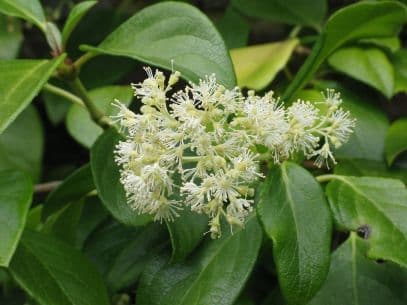
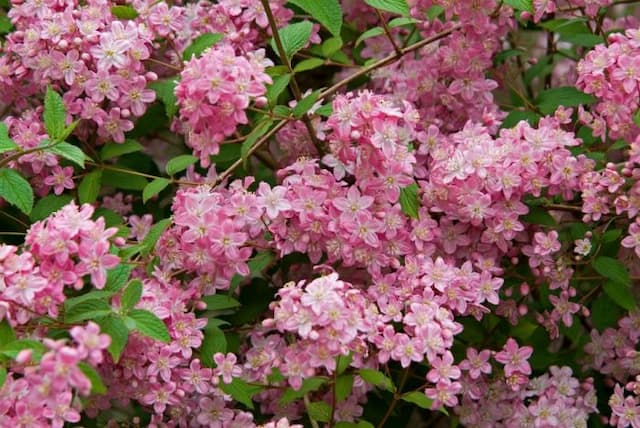
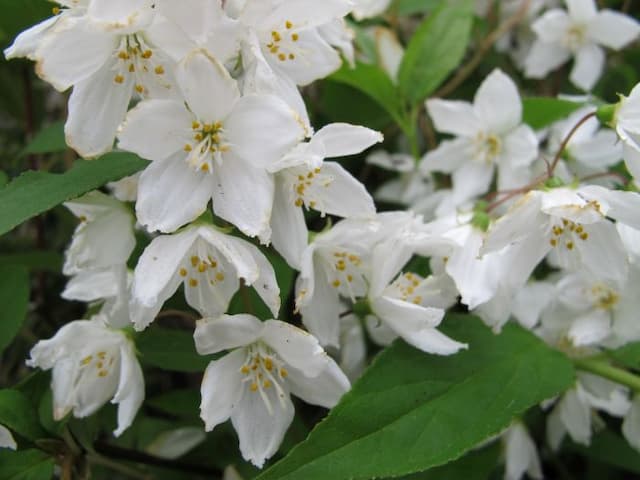
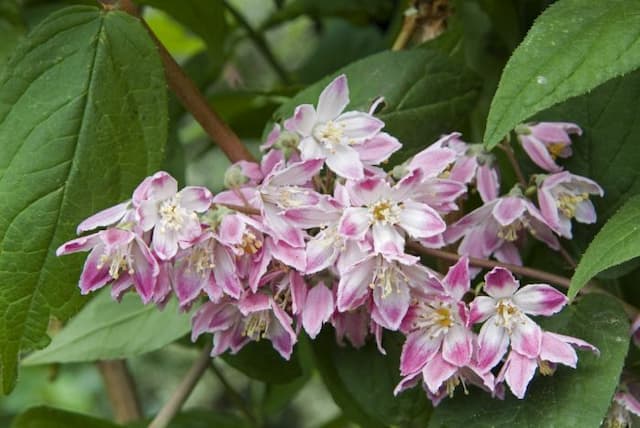

![Rose deutzia [Yuki Cherry Blossom]](/_next/image?url=https%3A%2F%2Fplants-admin.emdemapps.com%2Fimages%2Fplants%2F%2Fimages%2F604b6510a383a.png&w=640&q=75)
![Hydrangea [Hot Chocolate]](/_next/image?url=https%3A%2F%2Fplants-admin.emdemapps.com%2Fimages%2Fplants%2F%2Fimages%2F604b5a066e3bd.png&w=640&q=75)
![Hydrangea [Blackberry Pie]](/_next/image?url=https%3A%2F%2Fplants-admin.emdemapps.com%2Fimages%2Fplants%2F%2Fimages%2F604b56e2abc1d.png&w=640&q=75)
